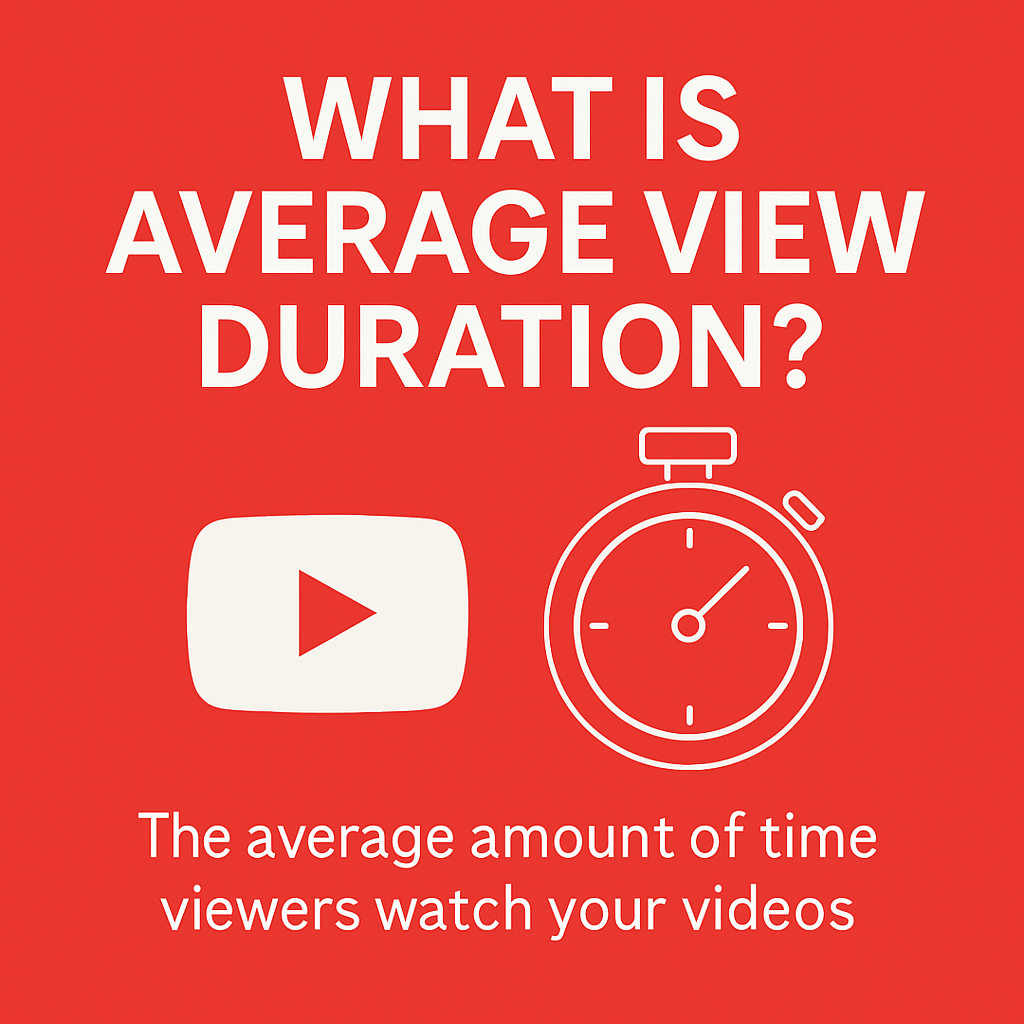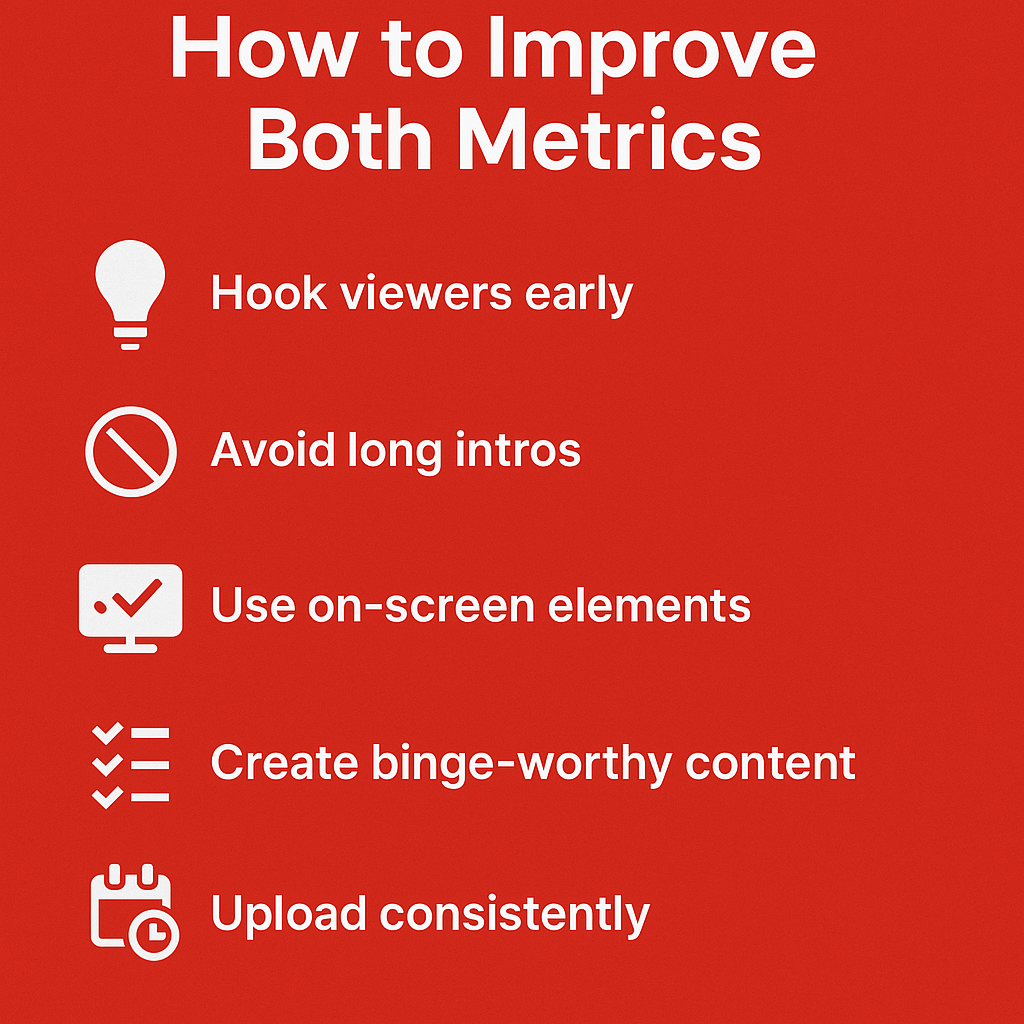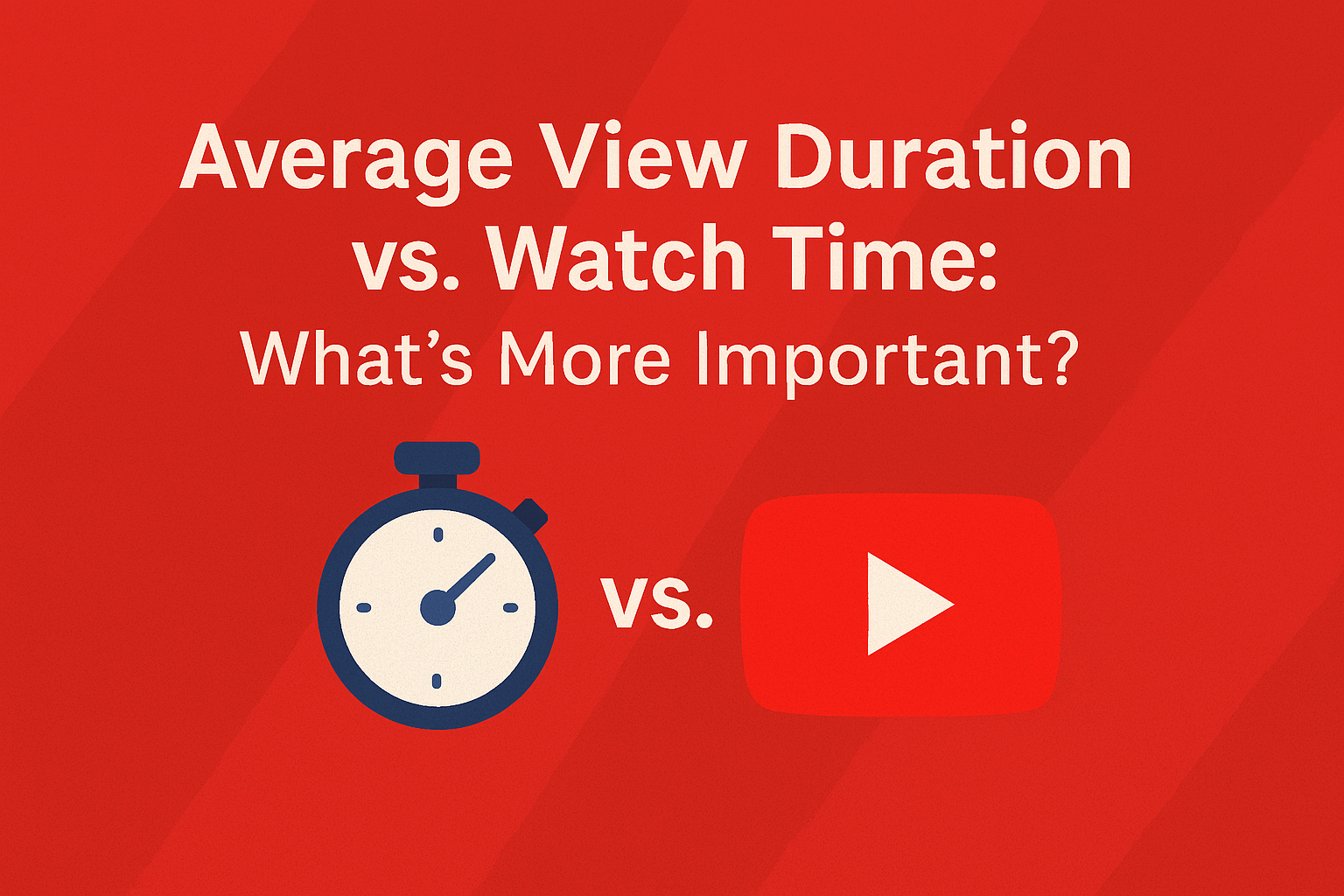If you’ve ever dived into your YouTube analytics, you’ve likely seen both Watch Time and Average View Duration listed prominently. They might seem similar, but these two metrics serve different purposes — and understanding the difference can help you make smarter content decisions and improve your video performance.
In this guide, we’ll break down what each metric means, how they work, and which one carries more weight when it comes to ranking, recommendations, and growth.
What Is Watch Time?
Watch Time is the total amount of time viewers have spent watching your videos. It’s measured in minutes and adds up across all views. For a more detailed breakdown of how YouTube watch time works and why it matters so much for your channel, check out our complete guide to YouTube watch time.
What Is Average View Duration?
Average View Duration (AVD) tells you how much of your video the average viewer watched. It’s a measure of engagement and retention rather than total volume.

For example, if you upload a 10-minute video and most viewers watch around 4 minutes before clicking away, your AVD would be 4:00. If another video is 5 minutes long and viewers stay for 4:30 on average, it has a much higher retention rate — even with fewer total views.
A high AVD means people are finding your content relevant and engaging, which is also a strong signal to YouTube’s algorithm.
Key Differences Between the Two
Here’s a simple breakdown:
| Metric | What It Measures | Why It Matters |
|---|---|---|
| Watch Time | Total minutes watched across all views | Helps boost video and channel ranking |
| Average View Duration | How long the average viewer stays | Indicates content quality and retention |
While they’re related — high AVD contributes to higher watch time — they serve different analytical purposes. Watch Time tells you about your overall exposure, while AVD gives insight into how compelling your content is.
Which One Matters More?
This depends on your goals — but in YouTube’s eyes, Watch Time generally carries more weight when it comes to ranking and recommendations.
Why? Because YouTube wants to keep users on the platform as long as possible. Videos that generate more total minutes watched are more valuable in that context.
However, Average View Duration is equally important for evaluating the quality of your content. A video with low AVD might attract a lot of views, but if people bounce early, that tells YouTube your video isn’t satisfying viewer expectations — and your visibility may suffer as a result.
How to Improve Both Metrics
Improving both AVD and Watch Time is ideal — and thankfully, many of the same techniques can help you boost them together:

- Hook viewers early with a powerful intro or intriguing preview
- Avoid long intros and get to the point fast
- Use on-screen elements and edits to keep the pacing strong
- Add chapters or structure your content clearly
- Create binge-worthy content using end screens and playlists
- Upload consistently to keep people coming back to your channel
And yes, if you’re struggling to get traction, you can also explore paid strategies — but make sure the views you buy are high-retention.
Some platforms specialize in delivering real high-quality views that last, improving both average view duration and total watch time. If you’re interested in a safe, vetted list of those services, check out our guide to buying YouTube views, where we feature platforms that offer high retention views — not just inflated numbers.
Final Thoughts
In the end, watch time and average view duration are both essential metrics — they just focus on different sides of your video performance. Think of Watch Time as your total power and AVD as your efficiency.
To grow sustainably on YouTube, you should aim to increase both: create content that viewers want to click on and stay with until the end. The more you engage and retain your audience, the more the algorithm will reward you — and the faster your channel will grow.

